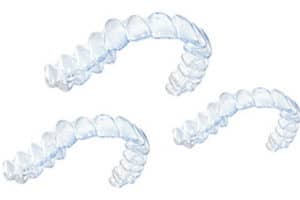Guide to Caring for your Teeth when You have Braces or Invisalign
Historically, braces, and more recently Invisalign, have been an excellent way to straighten teeth. When deciding to get Invisalign or braces, you are investing in your personal appearance and the health of your teeth. However, proper oral hygiene with braces is tricky because food and debris can become stuck in spaces between metal and teeth. Lodged food promotes decay and stained enamel. Food can also facilitate a reaction with oral bacteria and metal braces to create staining on teeth.
Additionally, if patients with Invisalign do not take care of their teeth, they may develop gum disease, plaque, and other dental problems that can prolong the need for braces or cause serious dental problems. The following suggestions will promote excellent oral hygiene whether you have braces or Invisalign.
How to Brush and Floss Properly with Braces
Brushing and flossing your teeth when you have braces is more important than when you are without braces. Select an electric toothbrush or a toothbrush with soft, round bristles. Since braces provide an opportunity for food to get caught in your mouth, brush for two minutes with fluoride toothpaste after eating. Concentrate on brushing all surfaces of your teeth, the roof of your mouth, and your tongue. If you cannot brush after a meal, rinse your mouth with water or mouthwash. Brushing your teeth with braces is easy, you just have to take the time to do it well!
Flossing with braces is manageable if you use a threader or waxed floss. When flossing with braces, manipulate the floss with a gentle back and forth motion so that it gets below your gum line.
Other tools that remove debris are dental picks and disposable proxabrushes. Insert the proxabrush at the top of the space, and gently move it down toward the gum line. Repeat the process multiple times.
Foods to Avoid with Braces
Avoid foods that promote tooth and gum diseases and foods that can damage your braces. Foods to avoid with braces include sticky, sugary foods, starchy items, and hard foods that can break wires. Gummy candy, soda, hard vegetables and hard candy are foods that you want to avoid. Additionally, you should eliminate popcorn and nuts because they can easily become lodged between teeth.
Caring for Your Teeth with Invisalign Braces
Unlike regular braces, Invisalign aligners do not have the metal wires and bands that traditional braces do. When you eat, you need to remove the Invisalign aligners from your mouth. It is important to clean the Invisalign aligners and your teeth thoroughly before returning your Invisalign aligners to your mouth.
Make cleaning your teeth more convenient by keeping an extra soft-bristled toothbrush, floss and mouthwash on every floor of your house. Carry a toothbrush and floss in a purse or car to make it easy to clean your teeth when you are not home. It is crucial to brush all surfaces of your teeth after eating. When you floss, place the floss between your teeth and gently move it up and downward under the gum line. Use mouthwash to rinse your mouth.
How to Clean Invisalign Aligners
You need to clean your Invisalign aligners each time you remove them from your mouth. Rinse them with water that is comfortable to the touch, but be aware that hot water can damage the aligners and ruin the fit. Place toothpaste on a toothbrush with soft bristles. Brush your aligners in a circular motion making sure that you clean the entire surface. Rinse aligners under water after you brush them, and then inspect to make sure they’re clean.
If a cloudy film remains, soak the aligners in a product for cleaning Invisalign or use a denture cleaner. Check the cleanliness of your teeth before putting the aligners back in your mouth.
How to Eat and Drink with Invisalign
Patients wonder whether they can eat and drink with Invisalign aligners still in. Although you can drink with Invisalign on, be aware that certain liquids damage the aligners, so it is best to stick with water. Colored liquids can stain your aligners, and hot liquids can affect the fit of the aligners.
Unlike traditional braces, you should remove Invisalign aligners each time before you eat. While it is not necessary to restrict, it is still preferable to choose healthy foods that do not promote tooth decay.
Tips and Techniques to Ensure Your Teeth are Getting Completely Clean with Braces or Invisalign
- Check for debris after you clean your teeth. A magnifying mirror can enhance your view.
- If you are with a family member or friend, ask if they see any debris that you may have missed.
- Contact your dentist if you notice pale white spots on your teeth. An appointment may help perfect your cleaning technique.
- Remember, unwashed hands contain germs that can be transferred to your Invisalign, braces, and mouth. Wash your hands before removing and inserting the aligners.
- When cleaning your braces, experiment with toothbrushes that have different bristle lengths. You may find some brushes clean more thoroughly than others.
- Refrain from soaking Invisalign in colored mouthwash that will tint the aligners.
- When removing Invisalign aligners, make sure to store them away from small children and pets.
Professional Braces Care
Straightening your teeth with Invisalign or braces is exciting and can change your appearance for a lifetime. Whether you are a teen or an adult, orthodontics can improve your appearance. Be sure to schedule and keep your orthodontic and dental appointments once your teeth have braces. Regular exams ensure that your braces and teeth remain in good condition. Examine your braces periodically, and contact your dentist if you notice any problems with your braces.
If you live near Boulder, Colorado and are interested in learning more about Invisalign, contact Dr. David Evans.


